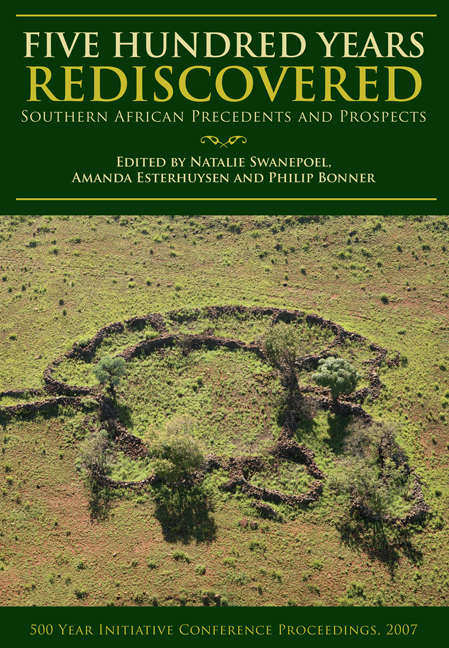Book contents
- Frontmatter
- Contents
- Preface
- 1 Introduction
- Section 1 Disciplinary Identities: Methodological Considerations
- Section 2 Material Identities
- 8 Revisiting Bokoni: populating the stone ruins of the Mpumalanga Escarpment
- 9 The Mpumalanga Escarpment settlements: some answers, many questions
- 10 Post-European contact glass beads from the southern African interior: a tentative look at trade, consumption and identities
- 11 Ceramic alliances: pottery and the history of the Kekana Ndebele in the old Transvaal
- Section 3 ‘Troubled Times’: Warfare, State Formation and Migration in the Interior
- List of contributors
- Index
8 - Revisiting Bokoni: populating the stone ruins of the Mpumalanga Escarpment
from Section 2 - Material Identities
Published online by Cambridge University Press: 30 May 2019
- Frontmatter
- Contents
- Preface
- 1 Introduction
- Section 1 Disciplinary Identities: Methodological Considerations
- Section 2 Material Identities
- 8 Revisiting Bokoni: populating the stone ruins of the Mpumalanga Escarpment
- 9 The Mpumalanga Escarpment settlements: some answers, many questions
- 10 Post-European contact glass beads from the southern African interior: a tentative look at trade, consumption and identities
- 11 Ceramic alliances: pottery and the history of the Kekana Ndebele in the old Transvaal
- Section 3 ‘Troubled Times’: Warfare, State Formation and Migration in the Interior
- List of contributors
- Index
Summary
Introduction
Stonewalled ruins in Mpumalanga materialise the complex dynamics of the area's precolonial past. Some of these settlements, such as the Ndzundza and Pedi capitals, continue to resonate in the present and were used as symbols of precolonial independence during the 20th century. Many more have become largely disconnected from memory and tradition. This paper revisits a group of these ‘lost sites’ and links them with a fragmented history of Bokoni. To do this we establish a dialogue between history and archaeology, that allows us to reflect on the people who lived in Bokoni and their economy.
Archaeological research on the Orighstad–Carolina stonewalled sites
The complex terraced and stonewalled sites between Orighstad and Carolina (Fig. 8.1 & Plate 3) have captivated many generations of South African archaeologists (e.g. Van Hoepen 1939; Mason 1962, 1968; Evers 1973, 1975; Collett 1979, 1982; Maggs 1995; Coetzee 2003; Smith 2006; Maggs this volume). P.W. Laidler, who specialised in precolonial ceramics, was the first archaeologist to visit the sites and collect a ceramic sample. Decoration placement and technique led him to suggest that the pottery associated with the ruins was comparable with pottery of known Zulu origin (Laidler 1932). Laidler did not, however, examine the stonewalled sites in any detail because his passion was pots, not the sites they came from.
Fortunately the sites did not escape the archaeological gaze for long and the Bloemfontein-based archaeologist E.C.N. van Hoepen published a detailed report on these stonewalled sites in 1939. This pioneering study focused on the stonewalled enclosures and terraces on the farms Blouboskraal, Schoongezicht and Boomplaas, and associated engravings on the farms Blouboskraal, Boomplaas and an unnamed adjoining farm (Plate 3). He (Van Hoepen 1939) provided detailed descriptions of the stonewalled enclosures, including their size, architecture and spatial layout. Much of his report focused on the function of features and use of structures. He interpreted the enclosures as African homesteads occupied by polygamous patriarchs, their wives, and children who were the ancestors of the Pedi and Ndzundza people who lived in the areas in the 1930s.
Three decades passed before archaeologists were drawn back to the Lydenburg escarpment sites.
- Type
- Chapter
- Information
- Five Hundred Years RediscoveredSouthern African precedents and prospects, pp. 135 - 168Publisher: Wits University PressPrint publication year: 2008



